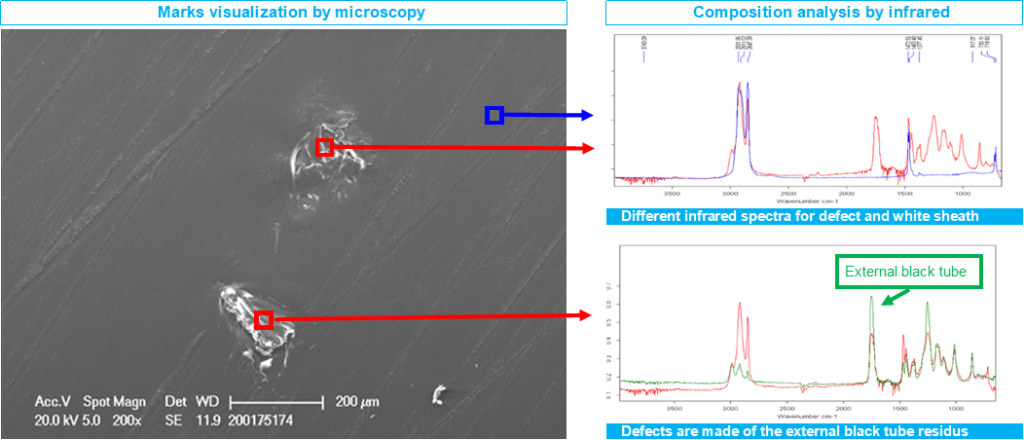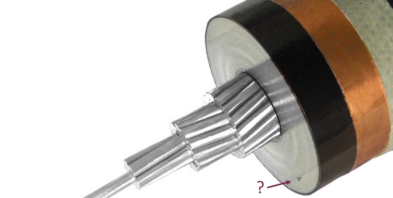Impurity identification
Question
Small faults can cause major problems in high-voltage cables. Damage to the insulating sheath or the presence of an impurity can lead to a breakdown when the power is switched on. The cable is then unusable and has to be replaced, causing serious inconvenience. This type of fault, which is particularly acute in high-voltage cables, also affects medium- and low-voltage power cables.
The case we are interested in here is to identify the origin of an impurity present inside the white insulating sheath.
Expertise
Materia Nova has extensive experience in microscopy, which enables defects and impurities to be better visualised.
This organic impurity was precisely identified using infrared spectroscopy (FTIR).

Solution
In this case, the impurity was first analysed by Scanning Electron Microscopy (SEM). The EDX detector coupled to the SEM indicated that this inclusion, essentially composed of carbon, was probably of organic origin, which led us to carry out an analysis by infrared spectroscopy.
The impurities observed in the white insulating sheath have an infrared spectrum different from that of the white sheath itself. Study of the spectra indicates that the impurities are polyurethane.
The impurities have the same infrared signature as the black outer sheath, indicating that there has been contamination of the white insulating sheath by residues of the black polyurethane outer sheath.
Scanning electron microscopy (SEM), coupled with FTIR spectroscopy, clearly identified the composition of this impurity.

